 Is it Blue-Green Algae...Or Something Else?
What do blue-green algae blooms look like? Do they always look the same? How can you tell blooms apart from their non-harmful look-alikes? Find the answers and helpful tips below.
Blooms don’t all look the same.
Bloom appearances can vary depending on the species present and their concentrations in the water. Generally speaking, the most common bloom conditions seen in Wisconsin result in water that:
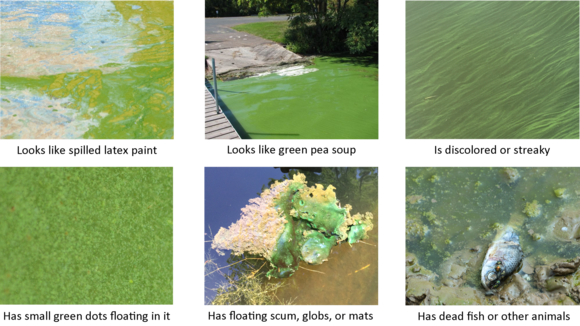
While most blooms are green or blue in color, others can be turquoise, brown, and even wine-colored.
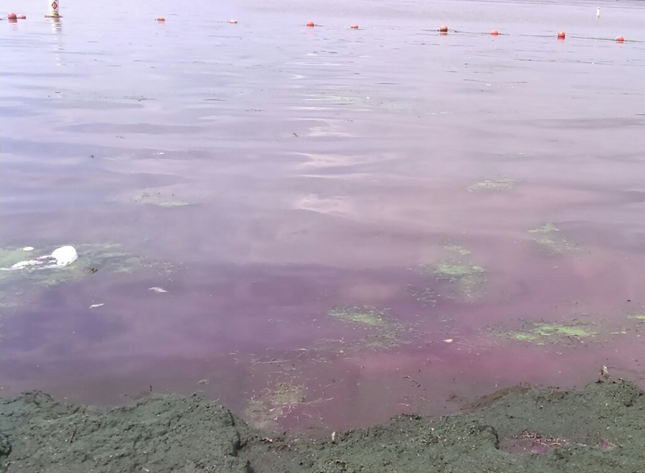 A bloom caused by the cyanobacteria species Planktothrix rubescans, which has a reddish pigment.
Blooms have döppelgangers!
Although they can look like blue-green algae, these conditions do not produce toxins and are NOT harmful:
 Did you know that the DPH HAB Program now offers an educational sign about blue-green algae and their look-alikes? Local health departments and tribes can purchase 12”x18” aluminum metal versions by emailing our program.
Simple, No-Cost Tests for Identifying Blue-Green Algae
The following tests* can be conducted by anyone wishing to tell apart potentially harmful blue-green algae (cyanobacteria) from non- toxin-producing true algae (green algae). Remember to wear rubber or latex gloves for protection!
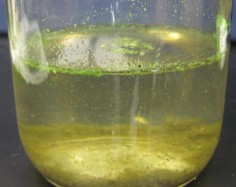
The Jar Test
- With gloves on, use a glass jar to collect a sample just below the surface of the water (avoid collecting just the top layer of scum).
- Fill the jar about three-quarters full (leave room at the top for gas production). Wipe any scum off the outside of the jar and screw the lid on.
- Leave the jar in a location where the contents will not be disturbed for 2–3 hours.
- After 2 or 3 hours, observe the jar to see where the algae have settled. Algae that sink to the bottom are likely true algae, and algae that form a greenish ring at the top of the water are likely blue-green algae (cyanobacteria).
|

The Stick Test
- With gloves on, push a long, sturdy stick into the surface of the algal material and slowly lift it out of the water.
- If the stick comes out looking like it has been dipped into a can of paint, the material is likely blue-green algae. If it comes out with long, green, hair-like strands or threads, the material is probably true algae (filamentous green algae).
- While accumulations of filamentous green algae may be a nuisance in a lake, they are not a health hazard.
*These tests may help you determine if you have higher levels of blue-green in your lake, but they don’t tell you whether or not the blue-green algae are actually producing toxins. When in doubt, it’s best to keep out!
|
Mark your calendars! Join us for our upcoming webinar!
On Monday, July 15, enjoy your lunch (or try to) during a noontime webinar about blue-green algae! The webinar will be hosted by the Department of Natural Resources and Department of Health Services. Gina LaLiberte, MS, will provide a background on blue-green algae biology and ecology, tips for how to recognize blooms, and will highlight current research areas. Amanda Koch, MPH, will describe the human and animal health impacts of exposure to blue-green algae and present the public health approach to investigating blooms and related illnesses in Wisconsin. Visit www.tinyurl.com/y4kwz5cu at 12:00 PM to view the presentation.
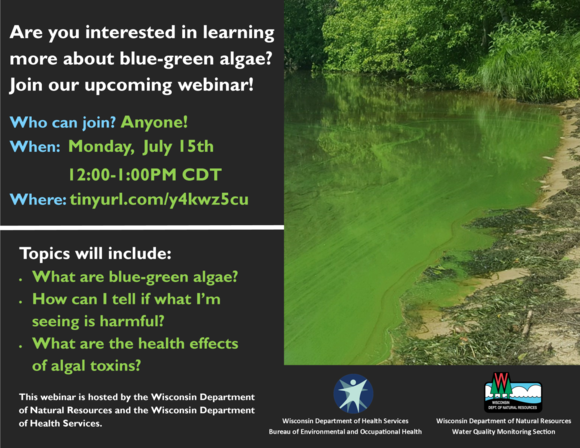

This issue’s sample post and photo:
|
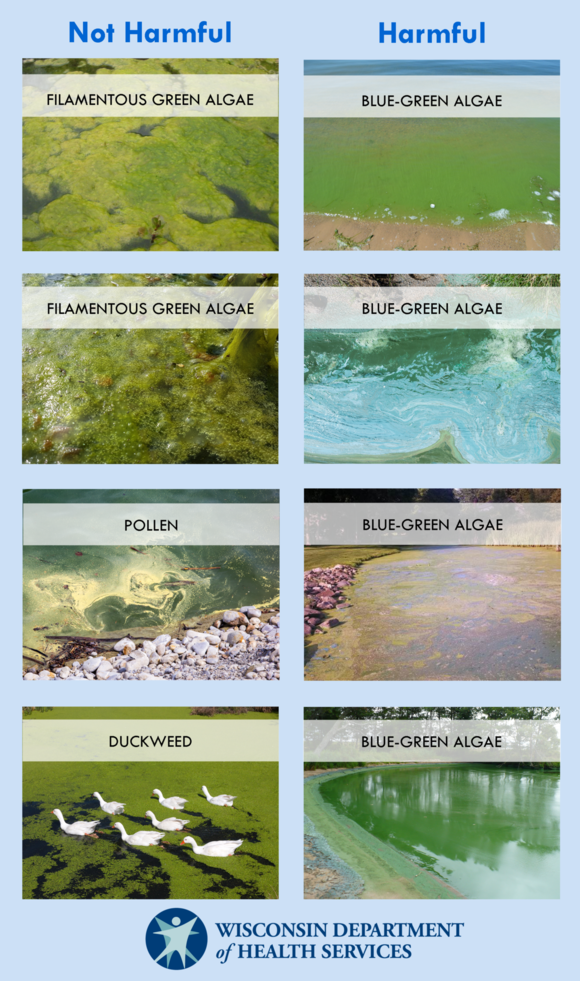 Right-click the image and save it as a picture, then you can use it with your post!

Missed a past issue? Previous issues are available on our Resources for Health Professionals webpage.
Email us your burning questions! If others can benefit from hearing the answer to your question, we’ll feature it in a future issue.
Remember that we are always available for consultation on any HAB health-related issue by email or phone (608-266-1120).
|
|